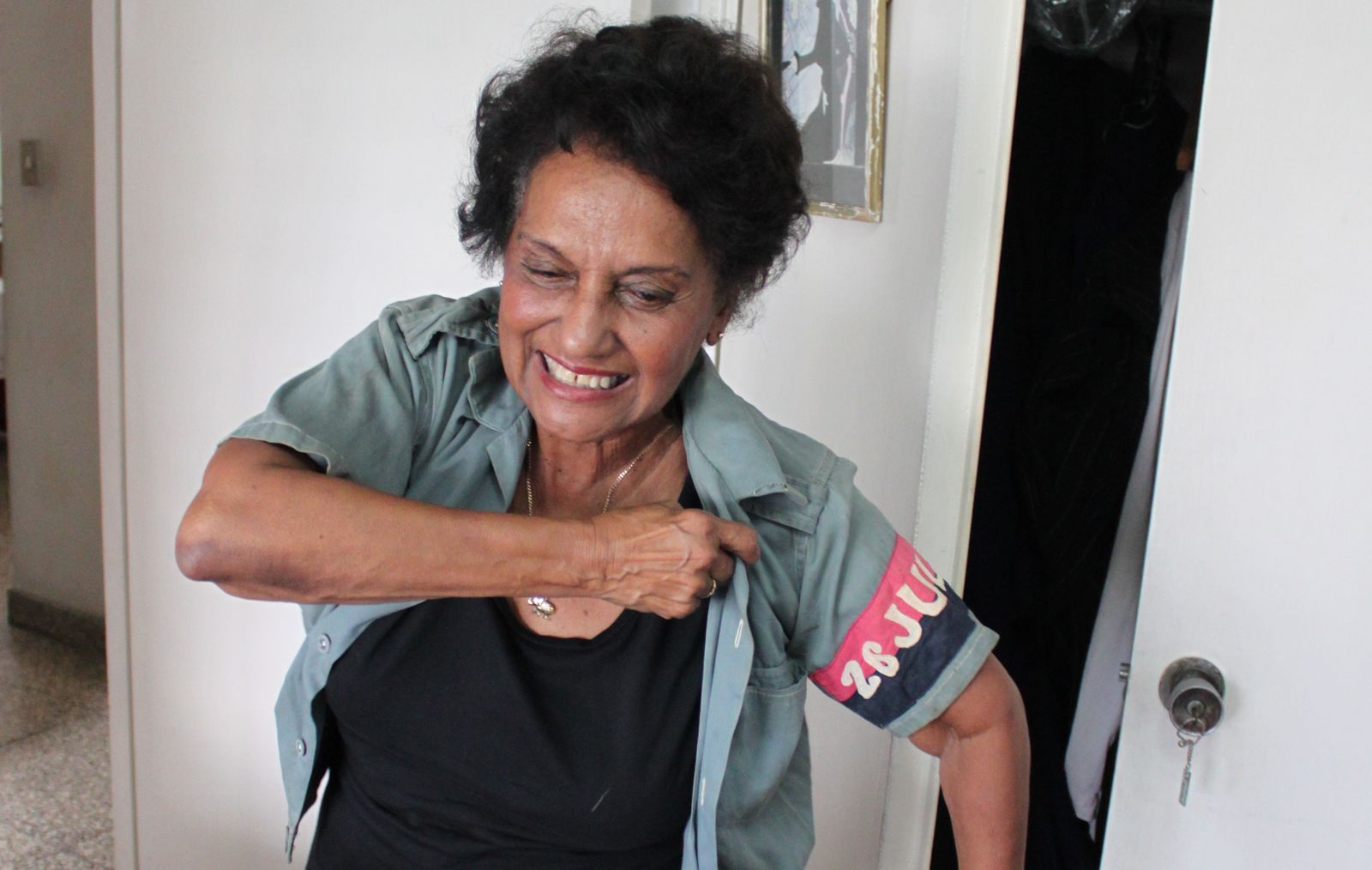Tucked away in Marta Rojas' closet is a memento from the Cuban revolution, a 51-year-old blouse. "I don't think it fits me anymore," she said, taking it off the hanger. "Let's see." Slipping her hands gently into the sleeves, she pulled the blouse to her chest. "Look at that! I can still wear it after all these years."
But there was a time when Rojas, 82, couldn't wear the blouse on the streets. She had to hide it before Fidel Castro took power because it was the uniform of members of the clandestine July 26 Movement. After Castro defeated U.S.-backed Fulgencio Batista on Jan. 1, 1959, his followers in Havana could finally wear their July 26 shirts, blouses and armbands in public, said Rojas, the author of five novels. "January 1st was something of a sensation. Everyone came out with their July 26 Movement shirts."
Her most exciting moment during those early days of the revolution, however, came hours earlier. Not long after midnight on Jan. 1, the Havana editor of Bohemia magazine, Enrique de la Osa, called her and other staff members and told them to go to strategic points in the city where gun battles between the rebels and Batista's forces might occur. "We knew the revolution was going to triumph," she said. "But we didn't know exactly when or how it was going to happen."
She had been with friends at the famed Tropicana club, known for its music and dancers. But it was relatively empty that night. Many of Havana's wealthy elites on Dec. 31 had gone to the Isla de los Pinos, renamed Isla de la Juventud, or Isle of Youth, after the revolution to attend the opening of El Colony hotel.
Rojas decided to go to a guest house near Ciudad Libertad, where there was a military airport, explaining, "I wanted to be near there in case there was a gunfight." But it was quiet and she slept until she was suddenly woken by a call from the director of Bohemia magazine. "He said, 'Fidel's entering Santiago de Cuba,'" the country's second-largest city. "Do you have your notes from Moncada?"
He was referring to material Rojas gathered during Castro's trial in 1953. Cuban authorities captured the rebel leader after he and his followers attacked the Moncada barracks in Santiago de Cuba. Rojas covered the trial, but could not publish her stories due to government censorship. She left her notes with a girlfriend, a nanny named Santa who had nothing to do with the revolution. The director sent a driver for Rojas so she could retrieve them.
"That really hit me," she said. "Six years had gone by and I could finally use that material." After working through the morning to make the magazine's publication deadline, she wore her July 26 blouse in public for the first time.
"Everyone streamed into the streets," recalled Rojas, who watched as Batista's followers headed to the airport at Ciudad Libertad to flee the country.
There was no significant violence in Havana as Batista's forces gave up. "I didn't hear a single shot," she said.
That was more than a half century ago. Since then, Rojas said, "So many things have happened in this revolution. It's been one thing after another and another." But her most memorable moments came during those pre-dawn hours before Castro's triumphant march into Santiago de Cuba. "I remember details, even people's names. It's as if I were watching a movie."
